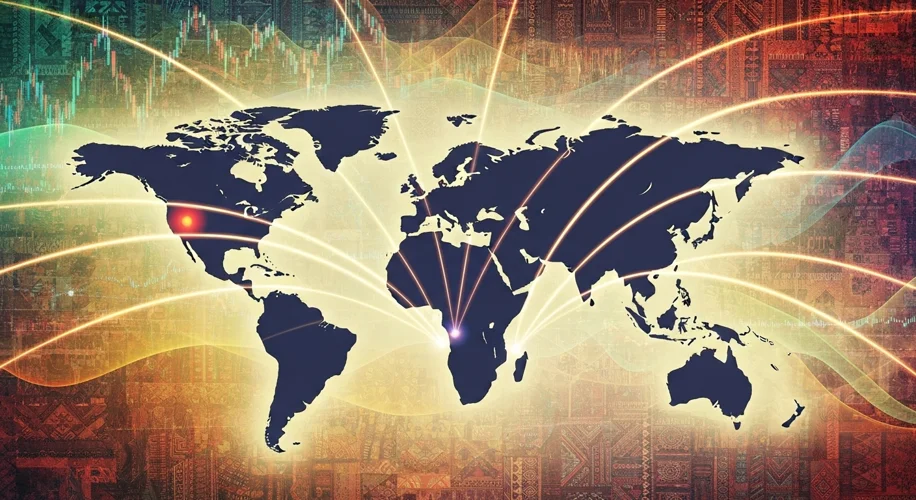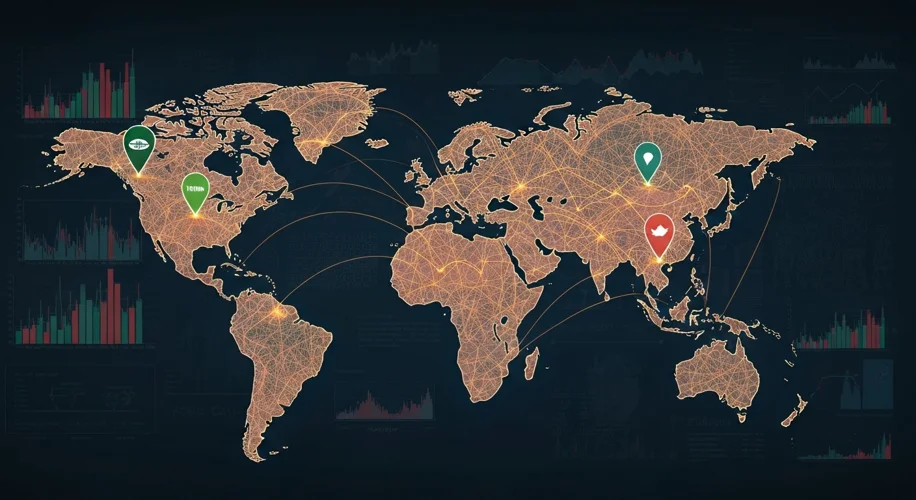The year is 2001. The world watches as the September 11th attacks ripple across the global stage, reshaping geopolitical alliances and economic landscapes. Yet, amidst this turbulence, a quiet but profound idea was taking root in the minds of economists and strategists, an idea that would, over the next two decades, challenge the established global order. This was the genesis of BRICS – an acronym that would come to represent a potent force in international affairs, initially conceived as “BRIC”: Brazil, Russia, India, and China.
Imagine a boardroom, perhaps in the hallowed halls of Goldman Sachs, where the influential economist Jim O’Neill, along with his colleagues, grappled with the seismic shifts occurring in the global economy. They observed that the traditional economic powerhouses of the West, while still dominant, were facing a growing challenge from nations experiencing unprecedented rates of growth. These weren’t just developing countries; they were emerging economic giants poised to reshape the very fabric of global commerce and influence.
O’Neill’s groundbreaking research identified four nations – Brazil, Russia, India, and China – as possessing the potential to become the four largest economies in the world by 2050. This wasn’t mere speculation; it was a data-driven prophecy. They possessed vast populations, abundant natural resources, and burgeoning markets. The “BRIC” concept was born, a shorthand for a new economic paradigm where the power balance was shifting eastward and southward.
The initial vision for BRIC was primarily economic. It was about recognizing and capitalizing on the potential for significant growth and investment in these emerging markets. The idea was that these nations, individually and collectively, could offer substantial returns for investors and, more importantly, could become major drivers of global economic growth. This economic perspective was the bedrock upon which the political aspirations of BRICS would later be built.

The early days were characterized by intellectual discourse and academic papers. The “BRIC” grouping was more of a conceptual framework than a formal political alliance. However, the sheer economic weight that O’Neill’s projections suggested these nations would wield could not be ignored. The potential was immense: a combined population exceeding that of the G7 nations, vast territories, and a significant share of global resources.
As the 21st century unfolded, the economic trajectories of these nations continued to impress. China, in particular, experienced an economic boom that defied expectations, rapidly becoming a global manufacturing hub and a major player in international trade. India also witnessed robust growth, driven by its services sector and a rapidly expanding middle class. Brazil, rich in natural resources, was becoming a key supplier to the global economy, while Russia, with its vast energy reserves, held significant sway in global energy markets.
The economic reality began to outpace the purely academic concept. The leaders of these four nations recognized the shared challenges and opportunities they faced on the world stage. They were often on the receiving end of policies dictated by established Western powers and felt that their voices were not adequately heard in international forums like the International Monetary Fund (IMF) and the World Bank. This shared sense of being underrepresented, coupled with their burgeoning economic might, sowed the seeds for a more formalized political collaboration.
The first official summit of BRIC leaders was held in Yekaterinburg, Russia, in June 2009. This meeting marked a pivotal moment, transforming the economic concept into a tangible political entity. The leaders discussed global economic governance, financial stability, and the need for reform in international financial institutions. Their collective aspiration was clear: to gain a greater say in shaping global economic and political decisions.
The early aspirations of BRICS were centered on reforming the existing international financial architecture, which they perceived as being dominated by Western interests. They sought greater representation and a more equitable distribution of power within institutions like the IMF and the World Bank. Beyond economic reforms, they also began to articulate a vision for a multipolar world, where power and influence were more widely dispersed.
In 2010, South Africa was invited to join the group, and “BRIC” officially became “BRICS.” This expansion was significant, adding a crucial African perspective and further broadening the group’s geographical and economic reach. South Africa’s inclusion signaled a deliberate move by the grouping to represent not just emerging economies, but also emerging continents.
The story of BRICS’ early development is one of intellectual foresight, economic transformation, and the gradual awakening of collective ambition. It’s a narrative that illustrates how economic power can indeed translate into political influence, and how nations, when united by common goals and a shared sense of purpose, can begin to redraw the lines of global power. The initial aspirations were about economic growth and investment; by the close of the first decade of the 21st century, BRICS was emerging as a significant force advocating for a more inclusive and representative global order.

